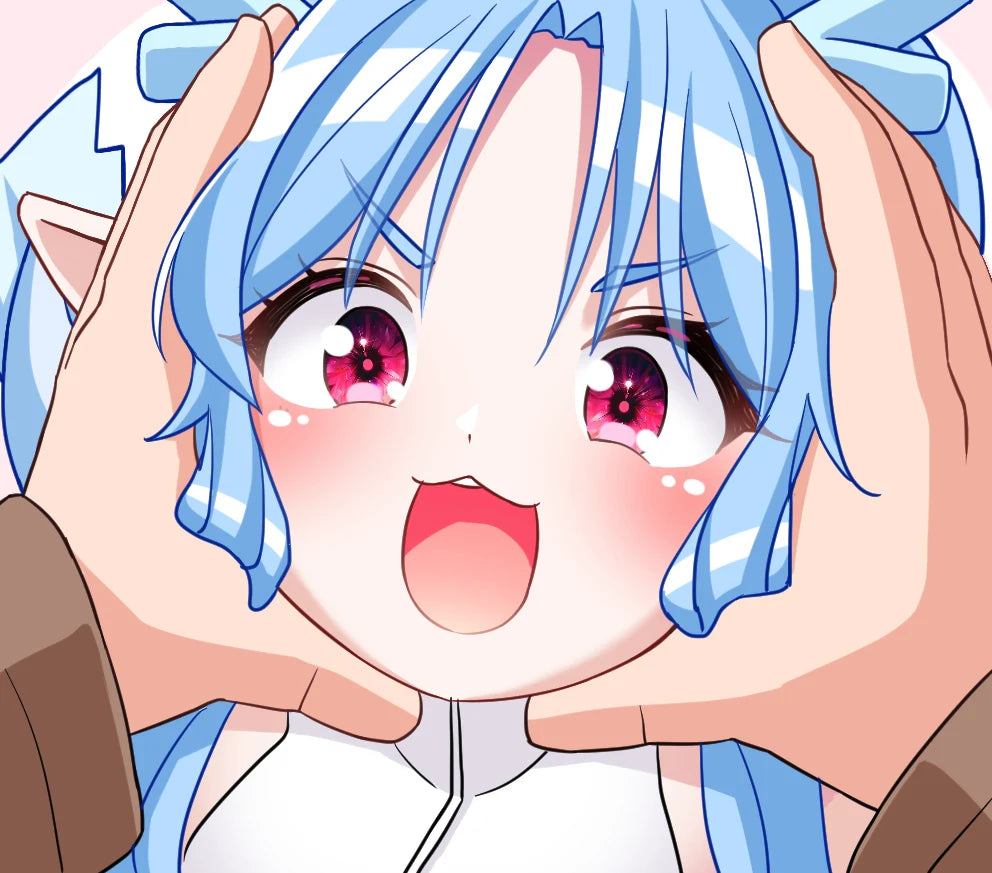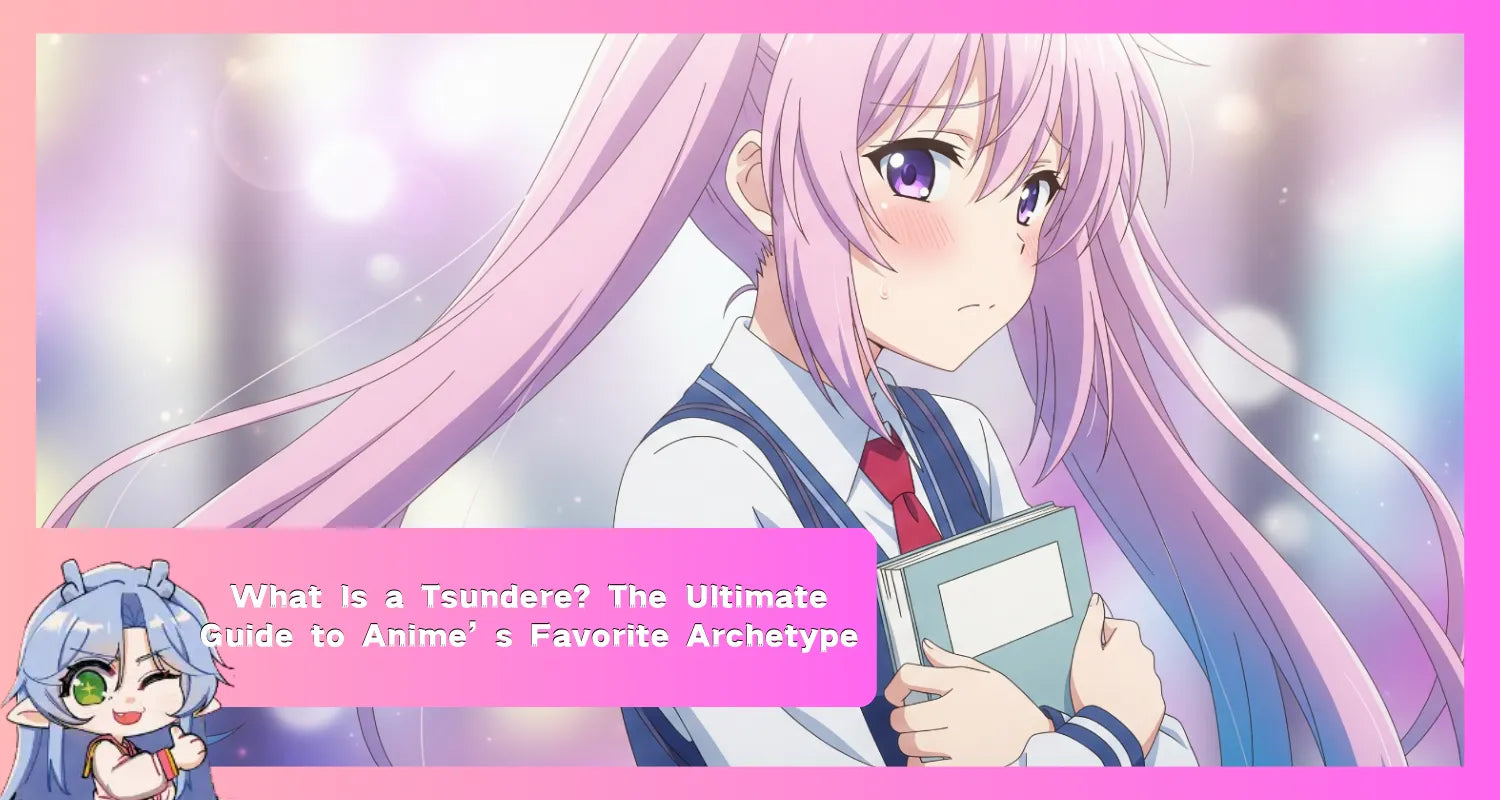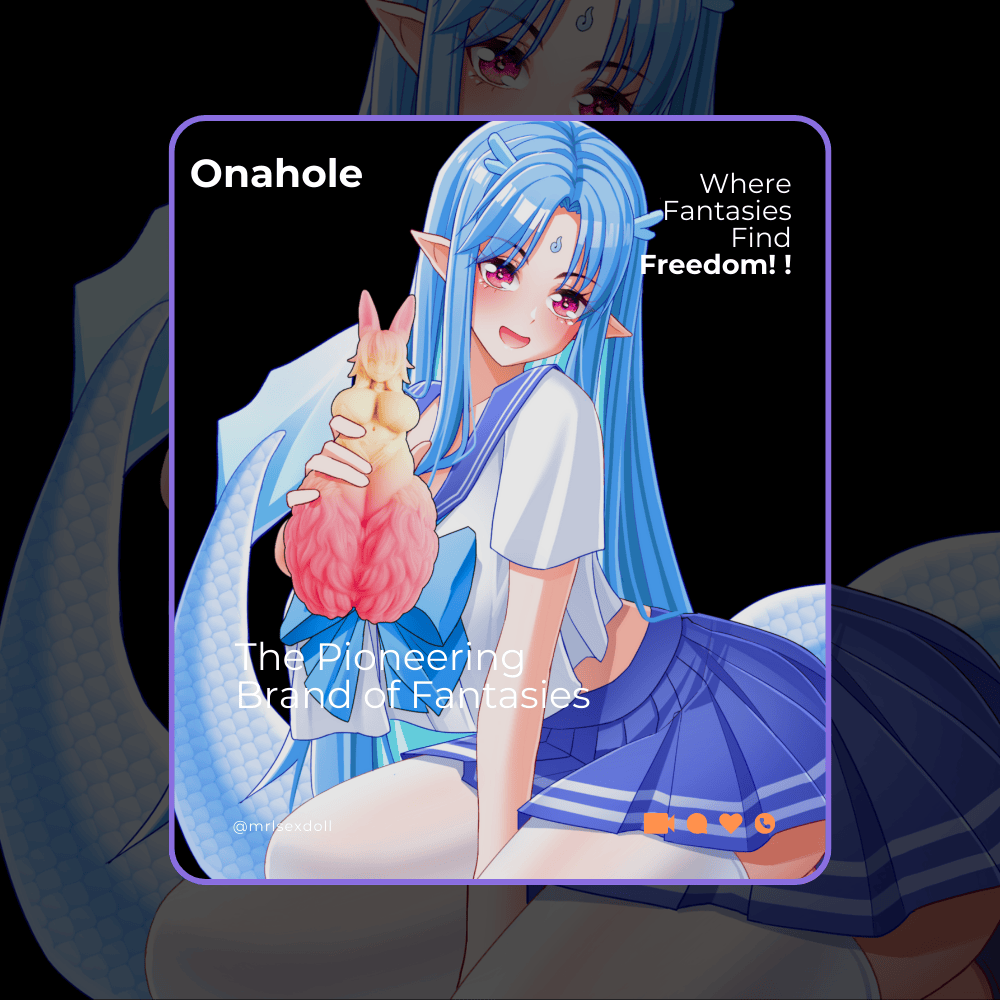What Is a Tsundere? The Ultimate Guide to Anime’s Favorite Archetype

"It's not like I made this for you... I just had extra, so you can have it! Baka!" If you have watched much anime or read manga, a scene like this probably feels very familiar. A character, blushing and flustered, shoves a lunchbox at someone while insisting it’s not an act of kindness. This is the perfect picture of a tsundere, one of the most famous and lasting character types in Japanese pop culture.
From powerful magic users to proud alien princes, the tsundere has been a fan favorite for years. But what does being a tsundere really mean? Where did the name come from, and why do people find these characters, who are so hot and cold, so interesting? This guide will cover everything you need to know, from the basic tsundere meaning to the famous tsundere characters who really define the role. For many people just getting into anime, the tsundere is an easy archetype to understand. Their emotional conflict creates funny or romantic situations that are easy to follow, unlike some of the more complex character types.
Table of Contents:
- The Tsundere Meaning: Deconstructing the Hot-and-Cold Personality
- The Anatomy of a Tsundere: Core Traits and Classic Behaviors
- A Spectrum of Personalities: The Main Types of Tsundere Characters
- The Tsundere Hall of Fame: Iconic Anime Characters Who Define the Trope
- The Queen of Tsundere: Taiga Aisaka (Toradora!)
- The Saiyan Prince of Pride: Vegeta (Dragon Ball Z)
- A Modern Tsundere Embodied: The Raven Anime Figure
- The Psychology of Appeal: Why Are We So Drawn to Tsundere Characters?
- Tsundere FAQ: Your Questions Answered
The Tsundere Meaning: Deconstructing the Hot-and-Cold Personality
The word ' tsundere ' is a Japanese term that perfectly captures a personality with two very different sides. It's made by mixing two words that describe the character's opposite feelings.

· Tsun Tsun (ツンツン ): This word paints a picture of someone turning away in anger or disgust. It describes a personality that is distant, irritable, and hard to get along with. This is the tough, cold, and sometimes aggressive front that the character shows to everyone else.
· Dere Dere (でれでれ ): On the other hand, this term means being very "lovey-dovey" or sweet. It represents a person who is affectionate, caring, and openly loving. This is the warm and kind person they are on the inside.
When you put them together, 'tsundere' describes a character who starts out tsun tsun but slowly starts to show their dere dere side, or a character who flips back and forth between these two moods.

While this kind of character has been around for a very long time, even showing up in Shakespeare's plays like The Taming of the Shrew , the word 'tsundere' itself is much newer. It became really popular in the early 2000s on internet forums where fans would gather. While talking about a 2001 visual novel called Kimi ga Nozomu Eien (or Rumbling Hearts), fans used the phrase “tsun tsun dere dere” to talk about a character's personality. The shortened version, 'tsundere,' just stuck. This story shows how powerful fan communities can be. They took a slang term from a small online forum and turned it into a word that people all over the world now recognize, proving that fans have a real impact on how we talk about media.
The Anatomy of a Tsundere: Core Traits and Classic Behaviors
To really get what a tsundere is all about, you have to look at the specific ways they act that show off their two-sided nature. These behaviors are what make the character type so interesting and create the tension that fans enjoy.
The "Tsun" Façade: The Icy Exterior
The tsun side is like a defensive wall that a tsundere puts up. It’s an act of being mean to keep people away and to protect their own sensitive feelings.

· Harsh Words: This is the most common trait. Tsunderes are quick with insults, and words like "Baka!" (idiot) and "Urusai!" (shut up!) are their go-to phrases. They will put down the person they have a crush on, dismiss what they say, and generally act rude.

· Comical Violence: In many anime, especially comedies, a tsundere’s frustration comes out as funny, over-the-top violence. A slap or a kick is often how they react when they get embarrassed. This is usually shown as a joke and not as them actually trying to hurt someone, serving as a physical way to show their inner turmoil.

· Denial and Distance: A key part of the tsun personality is to deny any good feelings they might have. A tsundere will ignore the person they like, give short answers, and if asked about their feelings, they will deny them loudly and angrily.
The "Dere" Core: The Hidden Softer Side
Even with their tough act, a tsundere's true feelings always find a way to come out, usually in indirect ways. These moments show the caring person they are deep down.

· The Reluctant Giver: Tsunderes are experts at giving gifts with an excuse. They might offer someone chocolate on Valentine's Day but say, "I just made too much, so you can have some!" This lets them do something nice while keeping up their tough image.

· The Unwilling Helper: When the person they like is in trouble, a tsundere will often step in to help, but they'll always say it's for a selfish reason. A common line is, "I'm only helping you so you stop being an idiot and making me look bad!".

· Private Moments of Care: A tsundere is most likely to drop their tough act when they are alone with their love interest, or when that person is hurt or in real danger. In these moments, the tsun side disappears, and their caring and protective nature comes out.
You can think of this behavior as a way for them to have "plausible deniability." Every kind thing they do is covered by an excuse that protects their ego. It's a way to protect themselves without even thinking about it. If their feelings are rejected, they can just hide behind the excuse and pretend they never cared at all. This adds a bit of psychological depth to their actions, making them more than just mean. It's a clumsy, but calculated, defense against getting hurt.
A Spectrum of Personalities: The Main Types of Tsundere Characters
The word 'tsundere' isn't just one thing; it's a wide category with a few different styles. Knowing these subtypes can help you see the small differences in various tsundere anime characters. The archetype's popularity is so immense that it appears across nearly every genre of anime and manga, from romantic comedies and action series to more adult-focused genres like tsundere hentai .

· Classic vs. Modern Tsundere: The "Classic Tsundere" changes slowly over the course of a story. They start out mostly tsun and gradually become more dere as time goes on. The "Modern Tsundere," however, switches between tsun and dere very quickly, usually for a funny effect in certain situations.

· Type A (Harsh) vs. Type B (Sweet): This is another way to classify them. Type A is the "Tsun Default" tsundere. They are mean to almost everyone and only show their soft side in very important moments. Type B is the "Dere Default" tsundere. They are usually nice and friendly to everyone but become surprisingly aggressive and flustered around the person they like.

· Hard Tsun vs. Soft Tsun: This is about how intense their coldness is. A "Hard Tsun" is very hostile and stays that way for a long time. A "Soft Tsun" is just a little bit prickly and can be easily pushed into showing their embarrassed, softer side.
To make things clearer, it helps to see how a tsundere is different from other popular "-dere" character types.
|
Dere Type |
Core Trait |
Defining Behavior |
Key Phrase |
|---|---|---|---|
|
Tsundere |
Harsh on the outside, soft on the inside |
Insults their crush but secretly helps them. |
"It's not like I like you, baka!" |
|
Yandere |
Sweet on the outside, obsessive on the inside |
Seems loving but gets violent if they are jealous. |
"I'll protect you... forever." |
|
Kuudere |
Cool and emotionless on the outside |
Stays quiet and distant but shows deep care in small ways. |
"..." (Says nothing, but saves the day) |
|
Dandere |
Shy and quiet on the outside |
Avoids talking to people but opens up to the one person they love. |
"U-um... hello..." |
The Tsundere Hall of Fame: Iconic Anime Characters Who Define the Trope
Knowing the theory is one thing, but the best way to understand a tsundere is to see one in a story. These famous characters have become the definition of the archetype for many fans.
The Queen of Tsundere: Taiga Aisaka (Toradora!)

Taiga Aisaka is often called the ultimate modern tsundere. She has the nickname "Palmtop Tiger" because she's small but has a very fierce temper. At first, she is mean to the main character, Ryuji, not because she has a secret crush, but because she is frustrated with her family and her life. Her story is a great example of a "Classic" tsundere who changes over time. As she and Ryuji get closer, her angry outbursts happen less and less, and she starts to depend on him emotionally, which eventually turns into love. Her complex personality and backstory make her more than just a simple trope; she's one of the most loved characters in romance anime.
The Saiyan Prince of Pride: Vegeta (Dragon Ball Z)

Vegeta is easily one of the most famous male tsunderes in anime. As the Prince of all Saiyans, his personality is all about pride, which makes him a "Hard Tsun" type. He starts out as arrogant, cruel, and completely focused on becoming stronger than his rival, Goku. Vegeta’s dere side doesn't show up as blushing or stuttering. Instead, it comes out in big, reluctant actions, like when he sacrifices himself to protect his family from Majin Buu or defends his son, Trunks. Over many years, he goes from being a villain to an anti-hero and finally to a dedicated family man, which is a perfect example of a long-term tsundere character arc.
A Modern Tsundere Embodied: The Raven Anime Figure
The tsundere personality is so popular that it's often captured in things like collectible figures. A good example is the tsundere girlfriend “Raven” . Her design perfectly shows the 'Hard Tsun' type. With her punk-style look, she gives off an image of being tough and rebellious. She might be posed with her arms crossed and a scowl on her face. But if you look closer, you might see a hint of softness, like a small blush on her cheeks or a little bit of doubt in her eyes. It's this mix of a tough look and a hidden softer side that makes figures like Raven a great physical representation of the tsundere characters we enjoy. The fact that products like this are made and sold shows just how much these character types have become a part of the culture. Fans don't just want to watch tsunderes; they want to own something that represents that personality.
The Psychology of Appeal: Why Are We So Drawn to Tsundere Characters?
The tsundere archetype has remained popular for a reason. There are some interesting psychological ideas that explain why we find this hot-and-cold personality so attractive.
The main reason is a psychological idea called the Gain-Loss Principle . This theory, which came from researchers Aronson and Linder in 1965, says that we are more drawn to people who are mean to us at first and then become nice, compared to people who are nice to us all the time. Why is that? Because getting someone who was hostile at first to like you feels like a win. It creates a "gain" from what we expected, which feels good. The feeling of "breaking through their shell" and being the only one who sees their true self is very satisfying, both for the characters in the story and for the people watching.
Also, tsunderes create great conflict in a story. Their inner battle between their pride and their real feelings is a natural way to develop a character. A story with a tsundere is about overcoming emotional walls, which is often more interesting than a simple "love at first sight" story. Finally, under their tough exterior, tsunderes can be surprisingly relatable. Their meanness is often just a way to protect themselves from past pain, insecurity, or a fear of being vulnerable—all of which are very human struggles.
Tsundere FAQ: Your Questions Answered
1. What is the main difference between a tsundere and a yandere? The biggest difference is why they act the way they do. A tsundere is mean on the outside but is actually a caring person on the inside; they act tough to hide their embarrassment. A yandere, however, is sweet on the outside but is dangerously obsessive on the inside. A tsundere's violence is usually for laughs, while a yandere's violence comes from jealousy and can be truly dangerous.
2. Can boys be tsundere characters too? Of course. While the archetype is more common for female characters, there are many famous male tsunderes. Characters like Vegeta from Dragon Ball Z , Inuyasha from Inuyasha , Kyo Sohma from Fruits Basket , and Edward Elric from Fullmetal Alchemist are all great examples of the trope.
3. Is being a tsundere in real life a good thing? While it's fun to watch in stories, tsundere behavior isn't great for real relationships. Being constantly hostile, insulting, and unable to share your feelings openly can be hurtful and toxic. Healthy relationships are built on respect, trust, and good communication, not on emotional ups and downs.
4. Who is considered the first tsundere in anime history? That's something anime fans and historians debate. Many people say Lum Invader from the 1978 manga Urusei Yatsura was the first real tsundere, and also the start of the moe trend. But others point to even earlier characters, like Sayaka Yumi from Mazinger Z (1972) or even Heckett from Osamu Tezuka's classic manga Princess Knight (1963).
5. Why do tsundere characters often say "baka"? "Baka" (馬鹿 ) is a Japanese word that means "idiot" or "moron." It has become a famous catchphrase for tsunderes because it's a simple and quick insult they can use when they feel flustered or embarrassed by the person they like. It perfectly captures their tsun side in one word.















